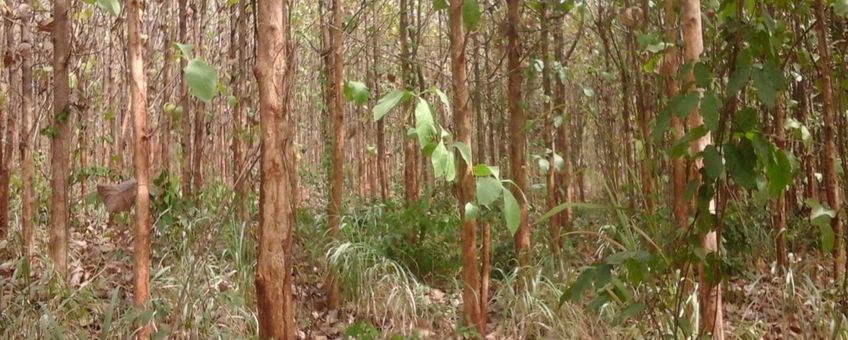
Mainly exotic trees are used for reforestation of rainforests in Africa
EcoSystemsThe African rainforest is of critical importance to all living organisms. Rainforests provide ecosystem services such as carbon sequestration, habitat for wild animals, medicine, raw materials like timber and food through fishing, hunting and agriculture; and a source of livelihood for forest fringe communities. The forest structure (stratification or layers from the forest floor to the canopy) and composition (number of species per unit area) of the rainforest makes it possible for the ecosystem to supply these goods and services. Despite this essential role, the structure and composition of the African rainforest are threatened by deforestation and forest reclamation. This has dire consequences on provision of ecosystem services and livelihoods of forest fringe communities in particular. Consequently, sustainable forest management and eradication of poverty are among the main global challenges of our time. The international community recognizes the intimate connection between these two challenges, and the need for coordinated response.

The burgeoning demand for wood and non-timber forest products has contributed to over-exploitation and illegal logging, which causes deforestation in Africa. Governments in Africa, and many parts of the developing world, are struggling to tackle deforestation and illegal logging activities which thrives on corruption ― the bane of sustainable forest management in the African rainforest.
Governments and other organizations have implemented reforestation and afforestation projects and programmes across Africa. These projects and programmes, essentially, focus on reclaiming deforested areas with the purported fast-growing species such as Tectona grandis and Cedrela odorata. Fast-growing species are usually exotic, invasive and typically planted in monoculture (single species) plantations at the expense of native species. Remnant patches and scattered native species, as well as juvenile species are usually cleared during plantation to prevent them from competing with the exotic ones. Such monoculture plantations are susceptible to diseases and wind damage; and contribute to biodiversity loss. Monoculture plantations modify habitats and food sources hence reducing the wellbeing of wildlife and fringe communities relying on them.

Forest experts argue that under the right circumstances, plantations create enabling conditions for regeneration of native species that can replace the plantation if the trees are removed without destroying the woody understory. However, in practice, fast-growing species are harvested much earlier while the (slow-growing) understory is still young. During replanting, the entire area is usually cleared to avoid competition.
Plantations in Africa are almost exclusively made of exotic species. In Ghana, out of 16 million seedlings supplied for planting countrywide in 2011, 95% were exotic species. These exotic monoculture plantations are established in both forest reserve and off-reserve areas. Traditionally, forest reserves have been seen as valuable resources because they provide the people with the necessities of life such as timber and non-timber forest products. For instance, communities fringing the Tain Tributaries Block II (Tain II) Forest Reserve substantially supplement their livelihoods and incomes with non-timber forest products collected from the Reserve. Even so, the Tain II Forest Reserve has been degraded by frequent wildfires. In 2003, a Public-Private-Partnership planted 1,934 ha of Tectona grandis (teak) and only 185 ha of a mixture of indigenous timber tree species. If this trend continues, we will end up converting about 90% of the Tain II Forest Reserve into monoculture plantation of exotic species. Perhaps management of the Reserve could use teak, which is believed to be fire-resistant, to design fire belts as part of efforts to mitigate the rampant fires, and grow back the original species. The protection of biodiversity must be a motivation for initiatives aimed at fighting deforestation and forest restoration.
Text: Eric Ofori, EcoSystems
Photos: Eric Ofori
